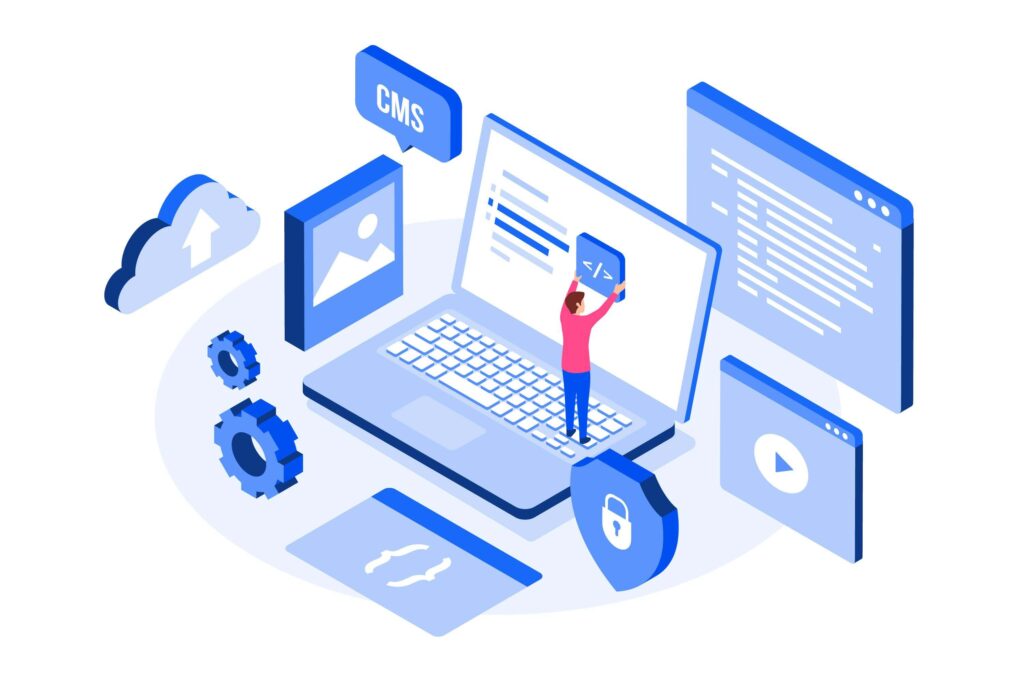Web applications have become indispensable tools for businesses. From online banking to social media platforms, these applications facilitate seamless interactions and transactions between businesses and customers.
However, alongside the convenience they offer is the inherent risk from cyber threats, including various web application security risks. Understanding web application security is paramount in protecting sensitive data and ensuring a safe online experience for users.
So, what is Web Application Security?
Web application security is the measures taken to protect web applications from various threats that could compromise the confidentiality, integrity, and availability of the application.
These threats can range from common security vulnerabilities like permissions misconfigurations to more advanced attacks such as cross-site scripting (XSS).
Why is Web Application Security Important?
Web applications are often relied upon by businesses of all sizes from small startups to global corporations. Web applications offer undeniable convenience, but they are not without risk. The security of web applications is important for a number of reasons:

Data Protection
Web applications often store sensitive information, including personal details, financial data, and intellectual property. Security breaches can result in severe consequences such as identity theft, financial loss, and reputational damage.
Compliance Requirements
Many industries are subject to regulatory standards mandating the protection of user data. Failure to comply with these standards can lead to hefty fines and legal repercussions.
Business Continuity
A successful cyberattack can disrupt operations, leading to downtime and financial losses. Ensuring the security of web applications is crucial for maintaining business continuity and customer trust. Implementing secure development practices throughout the software development life cycle is crucial for maintaining business continuity and customer trust.

Common Threats to Web Application Security
Web applications face a constant barrage of threats seeking to exploit weaknesses. There are many common threats to web applications that can have devastating consequences. The Open Web Application Security Project (OWASP) has created a standard awareness document detailing the top 10 most critical security risks to web applications. Some of these common risks are:
Broken Access Control
Broken access control covers a broad range of threats. Access control policies aim to keep users within their own privilege level and vulnerabilities arise when applications fail to perform the necessary checks on privileged actions.
Failure in access control can result in attackers being able to gain unauthorised access to sensitive data such as financial information or intellectual property. Specific threats relating to broken access controls are Indirect Object Reference and Directory Traversal vulnerabilities.
Injection
Injection refers to vulnerabilities that arise due to the lack of proper validation, filtering, or sanitisation. This commonly occurs in web applications when user-supplied input is trusted and used which is then rendered or processed in an unsafe way.
Injection vulnerabilities can have various impacts ranging from data exfiltration to user account takeover. Specific threats relating to injection are cross-site scripting and SQL injection vulnerabilities.
Security Misconfiguration
Security misconfiguration covers a wide variety of threats which arise from either improper configuration of the application and underlying system or from missing appropriate security hardening. The impact of security misconfiguration depends on the vulnerability.
If the application still has a default account enabled, then privileged access to the application can be obtained by an attacker who can then access, modify or destroy sensitive data.
Whereas if the application is misconfigured and displays verbose error messages, then an attacker may only obtain information relating to the internal file paths and technologies in use by the application.
For a deeper read into web application risks, check out the Open Web Application Security Project’s (OWASPs) Top 10.
Web Application Security Testing approaches
Web application security can be analysed through three distinct methodologies: Black Box, Gray Box and White Box penetration testing.
Dynamic application security testing (DAST) tools can be used to inspect code while it’s running and detect security vulnerabilities.
Black Box Testing
Black Box penetration testing replicates the conditions of a cyber-attack, by providing the testers with no information about the systems internal workings. The advantages of a black box testing are that it identifies what a malicious threat actor could find in a cyber-attack.
However, complex vulnerabilities could remain unidentified, and is difficult to provide tailored remediation advice as the testers won’t have the necessary system information.
Gray Box Testing
Gray Box penetration testing provides the penetration testers with limited information about the systems internal workings, this could include documentation about the web application’s API or web application framework.
This aids in focusing on system specific vulnerabilities, optimises testing efforts. There is still the possibility that testers will miss complex vulnerabilities and accurate information is crucial.
White Box Testing
White Box penetration testing allows complete transparency into the inner workings of the web application, enabling a thorough examination of the entire web application. This method allows penetration testers to gain a deep understanding of how the web application works which could allow them to identify vulnerabilities that would be difficult to identify though external testing alone.
Combining White Box Testing with manual web security testing can help identify vulnerabilities that automated tools might miss.
This method allows the penetration testers to provide detailed remediation steps that are specific to the web application configuration. However, it is resource intensive, requiring access to the source code and detailed documentation. It takes time for the penetration testers to analyse and understand the code.
Best Practices for Web Application Security
Web application security is a continuous process, not a one-time fix. To protect against damaging attacks, it is important to remain proactive at every stage of development and maintenance. This can be achieved by following industry best practices. Some best practices that will improve the security of your application are:

Implement Secure Coding Practices
Developers should follow secure coding guidelines and use frameworks that mitigate common vulnerabilities. Regular code reviews and static code analysis known as white box penetration testing can help identify and address security flaws early in the development process.
Secure coding practices should be integrated throughout the software development life cycle to address design-level flaws and implementation-level bugs. Have a look at Open Web Application Security Project’s (OWASPs) Secure Coding Practices checklist for a quick reference guide.

Enforce Proper Authentication and Authorisation
Use strong authentication mechanisms such as multi-factor authentication (MFA) and role-based access control (RBAC) to verify the identity of users and limit access to authorized resources.
Secure Data Transmission
Utilise encryption protocols such as HTTPS/TLS to encrypt data transmitted between clients and servers, preventing eavesdropping and tampering. Enforce HTTP Strict Transport Security to ensure users are communicating securely with your application.
Regular Security Assessments and Penetration Testing
Conduct regular security assessments and penetration tests to identify and remediate vulnerabilities in web applications. Automated scanning tools and manual testing techniques can help uncover potential security flaws. Using web application firewalls (WAFs) can help monitor and filter traffic to defend against various types of attacks.
Stay Updated on Security Threats
Keep up to date on emerging security threats and vulnerabilities. Promptly apply security patches and updates to mitigate known vulnerabilities. Implementing comprehensive web application security solutions can protect corporate web applications and APIs from cyberattacks.
For more information on securing your web application and its underlying server check out these useful resources:
· A Guide to General Server Security by NIST
· Best Practice Benchmarks by the Center for Internet Security (CIS)
· OWASP Web Security Testing Guide
Beating security threats to web applications
Web application security is aimed at protecting web applications from a wide range of cyber threats. By understanding common security risks and implementing best practices, organisations can improve their security posture and effectively protect their assets from threats.
Prioritising web application security fosters trust and confidence among users which helps to uphold a good reputation.
At SecQuest, we understand the importance of web application security and the need to have its security regularly reviewed. Our team of experts offer comprehensive Web application security testing to help your organisation understand the weaknesses and effectiveness of your current controls, as well as tailored advice and mitigation recommendations in line with your business objectives.
If you are looking to improve your web application security, contact SecQuest today.



